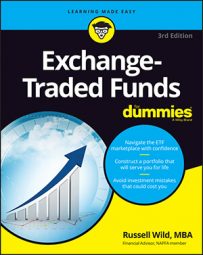There are a few national municipal ETFs — that is, funds that hold state and local government bonds from across the land — that are worthy of consideration for your portfolio.
If you live in a state with high income taxes, such as New York or California, and you’re in a high tax bracket, you may want to investigate state-specific muni mutual funds; plenty of them are out there (try Vanguard, T. Rowe Price, and Fidelity).
ETF purveyors iShares and SPDRs also offer a handful of state-specific ETFs. When you buy muni funds that are specific to your home state, you exempt yourself from having to pay state or federal income tax on the interest.
iShares S&P National Municipal Bond Fund (MUB)
Indexed to: The S&P National AMT-Free Municipal Bond Index, which includes investment-grade municipal bonds from all 50 states, as well as Puerto Rico and U.S territories such as Guam and the U.S. Virgin Islands. There are 8,500 constituent bonds in the index.
Expense ratio: 0.25 percent
Current yield: 2.97 percent
Average credit quality: AA
Average weighted maturity: 8.0 years
This fund is the best of the lot to date, with a reasonable expense ratio and excellent diversification. It is also free of the AMT (alternative minimum tax), which is a decidedly good thing if you derive a lot of income from tax-free sources.
SPDR Nuveen Barclays Capital Municipal Bond (TFI)
Indexed to: The Barclays Capital Municipal Managed Money Index, which features about 18,000 bonds from the Atlantic to the Pacific states and everything in between
Expense ratio: 0.30 percent
Current yield: 3.02
Average credit quality: AA
Average weighted maturity: 13.6
This fund is slightly more expensive than MUB, with a bit more volatility given the longer average maturity of the bonds. For example, in 2008 (a fairly bad year for municipal bonds), this fund earned a flat 0 percent versus 1.17 percent for MUB.
Historically, municipal bonds have yielded about 80 percent of what Treasury bonds of similar maturity yield. The two kinds of bonds have yielded about the same recently — mostly due to Treasurys paying less and less.
But that’s on a before-tax basis. After taxes, you do better with munis, even if you’re in a low tax bracket. In a higher tax bracket, you do much better with munis . . . assuming the munis you buy don’t default.
In fact, munis rarely do default. And the diversification offered by certain municipal ETFs makes any loss of principal due to defaults even less likely (but not impossible, by any means). Still, muni ETFs are more risky than Treasurys. You don’t want your entire portfolio in munis.
To figure out the tax-equivalent yield on a muni or muni fund, you may want to visit one of the gazillion tax-equivalent yield calculators on the Internet. One of the best is available from dinkytown.net. Click Investments in the column on the far left of your screen. Then click on Municipal Bond Tax Equivalent Yield. You’ll figure it out from there.

